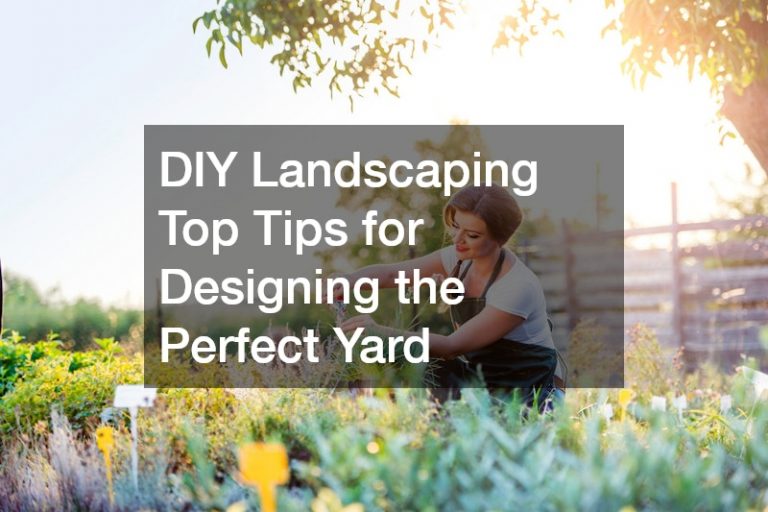For many homeowners, you enjoy having a lawn oasis. You want your yard to be an extension of your indoor living space. Furthermore, you want your home to be the envy of your neighborhood and turn heads with amazing curb appeal as onlookers drive by. For some, hiring a professional landscaping company and hardscaping service to assist with the lawn transformation is key. They can help with any structural needs such as building porches, and decks. As well as delivering and installing natural rocks, decorated stone, and colored gravel.

A pool contractor can put in a swimming pool, and you can even find a fencing contractor to help you have privacy while enjoying the outdoors. Still, if you are the kind of homeowner who enjoys DIY projects, there are several lawn projects you can do yourself to enhance the look and feel of your lawn.
Since you already have your bulk decorative rock installed, you can focus on the grass in the lawn itself by aerating the soil, fertilizing it, and controlling the weeds. You can also keep your lawn watered, keep the grass mowed, and the yard free of debris. Lastly, to have the lawn of your dreams, you can apply a pre-emergent herbicide and work to control pests that look for opportunities to nest in your lawn.
Designing the perfect yard can seem overwhelming, but with the right approach, you can transform your outdoor space into a beautiful, functional area that reflects your style and meets your needs. Whether you want a tranquil spot to relax, a space for entertaining, or a play area for kids and pets, these DIY landscaping tips will help you create the yard of your dreams.
Start with a Plan
The first step in designing your yard is to draw a plan. Keep it basic but include permanent features like tall trees and structures. Make several copies or use tracing paper to experiment with different ideas.
Note key features of your existing landscape, such as hills, sunny and shady areas, and any privacy issues you need to address.
Define Your Goals
Think about what you want to achieve with your yard. Do you need a space for dinner parties, a play area for kids and pets, or a quiet spot to read? Make a wish list of your current and future goals. This will help you prioritize elements and make the best use of your space.
Work Big to Small
When adding elements to your plan, start with the largest items first, such as patios, decks, or pergolas. These structures will serve as the backbone of your landscape design. Once these are in place, you can fill in around them with smaller features like flower beds, pathways, and garden sculptures.
Consider Your Style
Your landscape should complement the style of your home. A traditional house pairs well with a variety of landscaping styles, while a modern home looks best with clean lines and simple plantings. Look to your house exterior for design inspiration to ensure a cohesive look.
Choose the Right Landscaping Plants
Plants are one of the most important parts of your landscape. Use them to define areas and add visual interest. Consider using a mix of perennials and annuals for continuous bloom throughout the seasons. Layer the heights in your beds with the tallest plants in the back and the smallest in the front. This not only looks appealing but also ensures that all plants get the sunlight they need.
Focus on Colors and Textures
When selecting plants, choose a few colors that work well together to create a harmonious look. Mixing up textures and sizes can add depth and interest to your garden. Keep in mind that plants with varying leaf shapes and colors can create a more dynamic and engaging landscape.
Plan for Privacy
If privacy is a priority, consider planting hedges or building a fence. Hedges can provide a natural barrier and add greenery to your yard, while fences offer a more defined boundary. Be sure to check local codes before installing a fence to ensure compliance with regulations.
Think About Pathways
Pathways connect different areas of your yard and can be both functional and decorative. Solid concrete or pavers offer a more formal look, while crushed gravel or stepping stones create a natural feel. Space stepping stones to match a comfortable stride and add landings every few stones to provide spots to pause and enjoy the view.
Add Water Features
Water features can add tranquility and a touch of nature to your yard. A small pond is perfect for plants and fish, while a fountain can provide soothing sounds and help mask noise. Choose a water feature that fits your space and enhances your overall design.
Incorporate Lighting
Landscape lighting can highlight different areas of your yard and extend your enjoyment into the evening. Use uplights or spotlights to accent trees, floodlights for flower beds, and path lights to illuminate walkways. Lighting not only adds beauty but also improves safety.
With these tips, you can create a stunning yard that reflects your personal style and meets your needs. Remember, the best landscaping advice is to do what makes you happy. By following these guidelines, you’ll have a perfect outdoor space to enjoy for years to come.
.

